Asics has redesigned their ‘natural 33’ line-up this year, bringing in three new models with tinyurl-esque names – the 33M, 33FA and 33DFA. We missed reviewing any of the earlier 33 models, but like they say, better than late than never. Today we take a close look at the 33-M, and the FA/DFA will soon follow. We’ve put miles on the FA and DFA as well, so we now have a fairly good hang of their places in the series 33 playbook. Definitely helps put the 33-M into perspective.
A simple way to decipher the 2015 series 33 assortment would be to relate each model’s retail price to its weight and level of cushioning softness. At the very top is the 33-M, which comes with a $140 sticker and a midsole loaded with a high amount of foam softness. Pay more cash, get more foam – good old system of barter like how the ancient Mesopotamians rocked it.
Next in line is the $110 33-FA, which adjusts its cushioning downwards along with a few design tweaks. The $90 33-DFA is the least soft of them all, and by using a midfoot strap and a firmer insole, it has less in common with the FA than the latter has with 33-M. A 4 mm heel to toe gradient cuts across all three, and we’ll dive into deeper details on the FA and DFA when it’s time to review them.
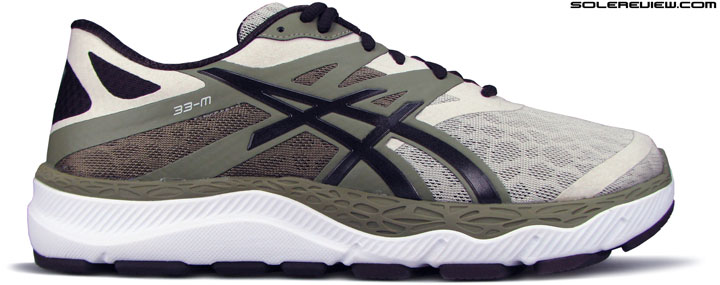
The 33-M looks like little else in Asics’s product line, so can we safely assume that the brand now wants in on the lucrative business of maximal midsoles?
Visually, the new 33-M would seem like Asics’s answer to the maximalist mayhem brought upon by brands such as Hoka One One. When viewed from that lens, the 33-M seems be an unoriginal and uninspiring concept. At the same time, if you wear a pair of Hoka (Bondi 4, Clifton) and then switch to a pair of 33-M’s, the contrast couldn’t have been starker. By means of design and material, the 33-M turns out to be a very different experience.
Different, but is it impressive? If you’ve gotten this far into the review, you must have glanced at the score and verdict right at the top. So you already know that we’re not exactly won over by the 33-M. Not that it is an inferior product, but you don’t look forward to welcoming this shoe as a part of your regular rotation.
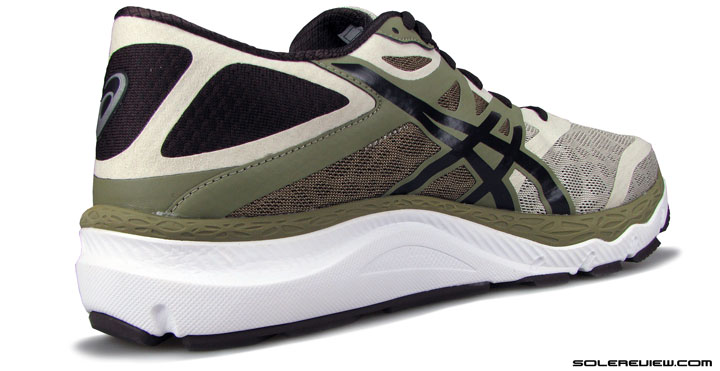
The full foam midsole might be soft, but lacks the sophisticated, layered character of popular large midsoled models.
There are a few reasons for this. To begin with, the ride experience is fairly mono-dimensional. By that we mean that there’s a lot of cushioning softness, but minus the responsiveness, resilience or any other defining characteristic which transforms ordinary into something more engaging.
There’s a second hurdle at which the 33-M stumbles, and that is how it compares to rest of the new 33 product line. It doesn’t necessarily feel a better shoe than the cheaper 33-FA, for reasons we’ll get into over the spread of this review – it simply fails to make a convincing case for the $30 premium it charges over the FA.
We might have had a different opinion of the 33-M were it reviewed in isolation. But the truth is that all three models have been compared, and we think that paying $140 for 33-M doesn’t make sense in light of the $110 FA being available. If we had to edit the natural 33 assortment, we’d do so by dropping the 33-M and 33-DFA, and focus solely on the $110 model.
But what’s done is done, so you do end up with the 33-M/FA/DFA trio, and we’re hoping to help you make an informed decision when it comes to buying any one of these.
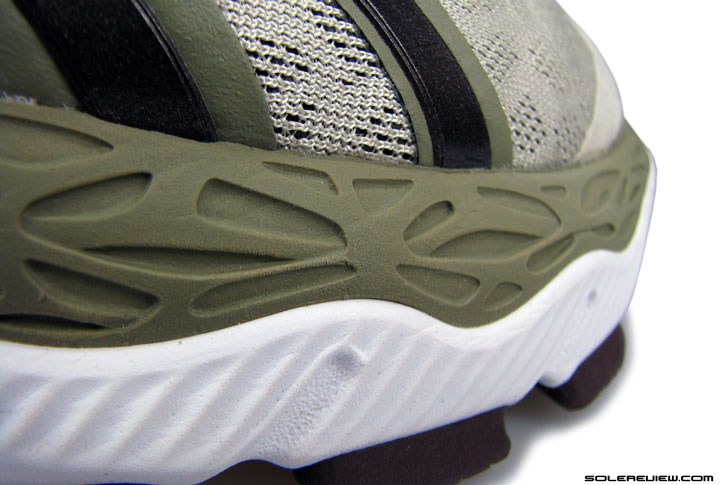
Midsole design is simple enough – a soft foambed (olive color) over a less softer (but still soft) white foam base.
The 33-M’s midsole adopts a fairly uncomplicated set-up. It uses two densities of foam, a soft one (olive hued) over a less softer (white) layer. Okay, the softness is not on par with the Nimbus 17, but still provides plenty of give.
The 33-M uses an open celled foam insole atop a strobel sheet made of the same material. You might recall from our Nimbus 17 review that Asics has replaced their SP45 EVA sheet with the lighter density material used on the sockliner. This is exactly how the 33-M is set up too.
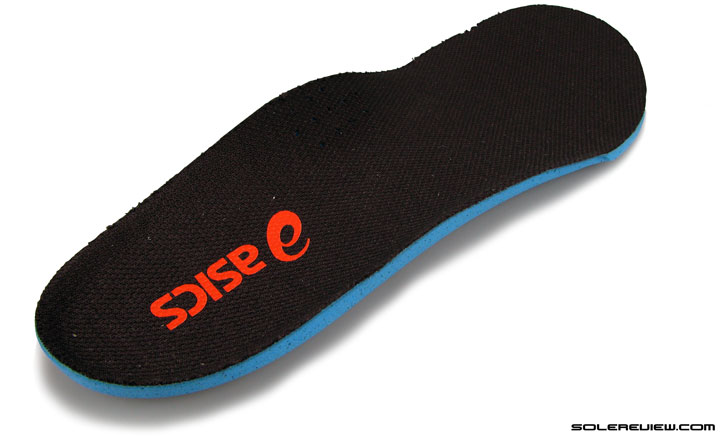
The insole, strobel and olive layer of soft midsole work together in concert to amplify underfoot squish.
So when the insole, strobel and the first midsole layer play together, softness immediately prevails underfoot. But as highlighted previously, the cushioning quality lacks dimension, it begins and ends at just being soft. There’s little responsiveness or feedback, a trait which has now become a default expectation.
Things have moved ahead a lot in material development, and plain, one dimensional EVA doesn’t cut it anymore. Think adidas Boost, Nike Lunarlon, UnderArmor’s charged foam. Even the Fresh Foam Zante. Asics has Gel, but that’s more of an aesthetic marketing scam than a functional contributor.
33-M’s midsole softness is consistent from heel to toe, as the foot rests on fairly thick stack heights. To give you a perspective, the 33-M’s forefoot has the same stack height which the 33-FA uses for its heel. So foam compression is available for use throughout, regardless of whether you’re a forefoot or rearfoot striker.
This makes transitions bit of a slog on the 33-M. You can’t be going fast when your body weight dips into the soft foam core; at best the 33-M’s use is limited to long slow runs or recovery runs. And there’s the weight angle too. The 33-M is extremely heavy in present day context; something we’ll spend some time fleshing out in a bit.
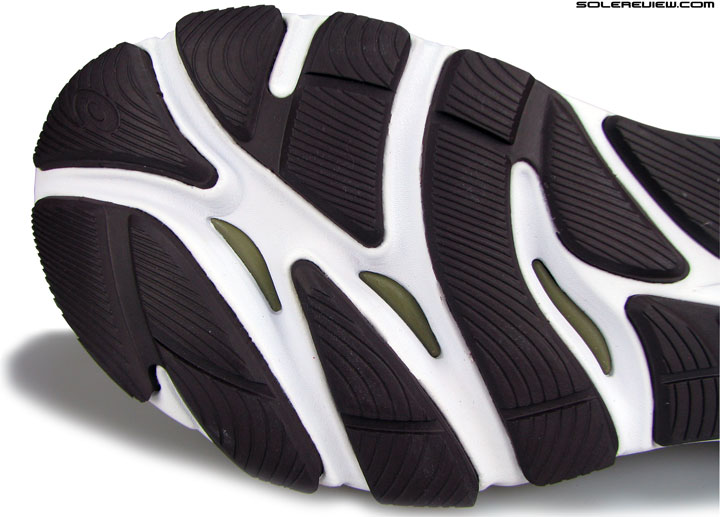
Super wide flex grooves between outsole pods, but that doesn’t necessarily make the 33-M easy to bend.
There’s a lot of outsole rubber separating the midsole foam from Asphalt. The lugs look like thick slabs of chocolate (at least on our reviewed color), and come divided by very wide flex grooves exposing the foam beneath. This articulation would seem to offer much flexibility, but the 33-M is a surprisingly stiff shoe to bend.
We have a fairly neutral stance when it comes to forefoot flexibility. It might be a good thing or an unwanted quality, depending entirely on the individual who’s using the shoe.
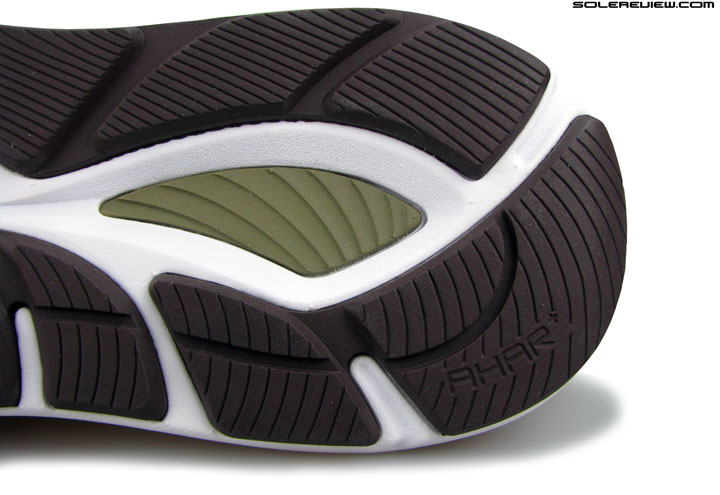
Footstrikes for rearfoot landers tend to happen on heel edge because of how the outsole is designed – it sits low on the ground with a minimal upwards angle.
One thing worth a call-out is that the 33-M’s outsole follows a standard toe spring and an almost un-beveled heel. So forefoot roll-over (think Hoka) isn’t part of the transition quality, neither is a late stage rearfoot strike. Because of how the heel edge sits nearly flush with the running surface, that area takes most of the footstrike impact.
Unlike shoes such as the Skecher GoRun Ride 4 or most of the Hokas, rearfoot landers won’t find their footstrike move forward. Apart from how the outsole wears under heel, heel to toe transitions don’t come gradually as they would in shoes with beveled ( angled upwards) heel.
There’s a wide outsole footprint in the front, so it’s a fairly stable base for forefoot strikers to land on. The front outsole has a rather quirky wear pattern, and presumably so because of how much grooving separates outsole pads. The forefoot rubber shredding tends to be localized, instead of being wider spread.
In our case, the wear happened on the edge of the third outsole row from the front. Based on early impressions, long term durability should not be an issue; forefoot uses blown rubber and the midfoot-heel is layered with hard carbon rubber, and in both areas the rubber is super thick.
The 33-M lacks any kind of ground feel – the soft midsole muffles that feedback. It’s funny how Asics decides that a low heel to toe differential of 4mm is all what takes a shoe to qualify as ‘natural’. A mushy midsole, a stiff forefoot and 20-24 mm stack heights are anything but. The fact that some runners decide whether a shoe is good or bad by just on the basis of the heel drop is also a very strange way of evaluation.
The stack heights, the level of compression (the difference between published static drop and loaded heel drop), and the overall midsole design play an important role in determining how different shoes behave, and the heel drop shouldn’t be seen as the single most important thing to consider.
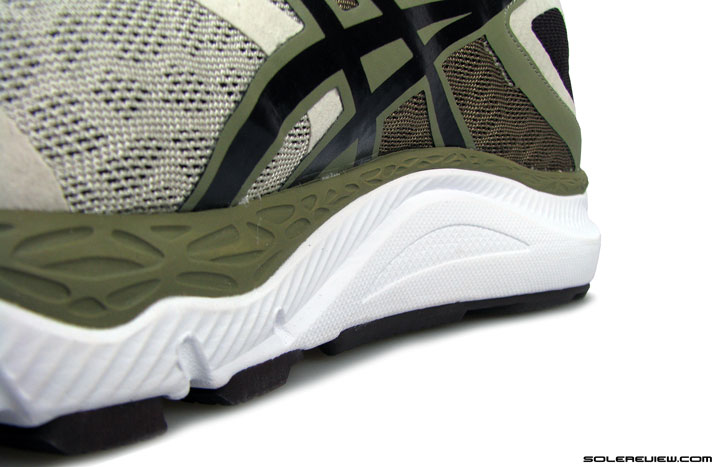
The interlocked design of the soft (olive) foam and the slightly firmer base gives the 33-M a cushioned, yet neutral aspect.
Paradoxically, the softness does not rob the 33-M of stability. The shoe being neutral, there is some amount of roll, but the white section of the midsole serves as a stabilising base. It interlocks with the Olive colored foam – you can see that on the bottom where the upper midsole exposes itself in small windows. The lower midsole also flares out around the heel area, creating a wider plant. So the combination of a soft core encapsulated in a comparatively firmer surrounding gives the 33M a neutral, yet supportive stance.
The sensation of stability is also helped by 33-M’s surprisingly heavy weight. Not only does this Asics shoe possess more empirical mass than examples of Hoka maximalism, but also when placed against traditional high heel drop (and stack thickness) models.
374 grams/13.1 Oz for a half pair of US 11 far exceeds the acceptable median, and enters a region where the actual weight is felt during runs. Here’s a quick rundown of how other heavier models compare – 382 gms/13.5 Oz for the Nike Air Max 2015 and the adidas Springblade at 396 gms/13.9 Oz. This is to say that the 33-M is no more than 10% lighter compared to these big boys.
You’d think that the FA and DFA would fare far better, but they weigh average at best, both of them in the neighborhood of 300 gram/10+ Oz levels.
The upper design is a now oft seen mix of mesh, synthetic leather and TPU overlays, all while maintaining a no-sew approach to putting all together.
The forefoot area is mostly uncluttered and unencumbered with overlays, save for a narrow band which runs along the curve of the toe bumper. The midfoot sides are swathed over with synthetic leather panel and the Asics logo.
For aesthetic detailing, the lateral (outer side) has the molded version of the Asics stripes, and the medial side sticks to a plain synthetic leather cutout treatment.
There isn’t much padding on the tongue, which like most Asics shoes, is supplied without a gusset tethering it to the upper sides. Lacing is based on standard 6+1 eyelet rows, and if you happened to use the last row, you will find out that there isn’t much tongue flap left underneath.
Heel part has an internal and rigid molded stiffener, and this is where the 33-M differs from FA and DFA. Both the $110 and $90 models have collapsible heels, and gentler on the Achilles than the 33-M.
As far as the lining goes, it’s a smooth mesh backed with foam. Low light visibility is limited to just the Asics logo on top heel, and this design treatment extends across the current 33 series, with the retail price deciding the size of the shine-in-the-dark logo. Lower the price, smaller the reflective logo.
Inside, there’s room aplenty, and we wished Hoka used a similar upper fit over their oversized midsoles. Asics says that this shoe ‘uses the roomy 33-last’ and what that means is that forefoot delivers a space which is in a happy place between snug and baggy, with no tight spots on rest of the upper. The toe-box height is generous, and the snug nosed toe-bumper converts into adequate medial toe space.
Sizing should run true to size for most, with the caveat that the 33-M has a little more open space ahead of toes than one is typically used to. There will be a small minority of runners who might half-size down, so better to try it first before committing.
Tongue doesn’t have much foam inside, and we thought that lacing pressure might be an issue. But it really was not, and we can think of one reason why. There is a synthetic leather lacing guide over the tongue, and it appears to insulate the foot from top down cinching.
The only time you’ll face any lacing issue is when the last row is used. There’s not enough tongue length, so the laces will barely skirt over the flap, and you’ll feel some pressure over the tongue edges.
Two things which could have been better on the 33-M upper would be the collar and the interior feel when worn barefoot. The heel collar might use an internal counter, but the design is more straight than contoured. This doesn’t provide much heel grip, and has the tendency to let the foot slide.
We also feel that the sheer weight of the shoe is an also an accessory in reducing collar grip. The other 33 series models do a better job at this; their lower weights combine with a collapsible heel (and hence better at wrapping around the foot) to produce an upper grip with no complaints.
If you decide to go socks free on the 33-M, you’ll certainly be introduced to the thick seam inside, around the forward arch area. The Nimbus 17 also had a medial seam for support, but it was cleverly covered with a no-sew tape. The 33-M doesn’t and instead uses a Mizuno type material which isn’t exactly best friends with bare-skin. You are sure to feel irritated during runs, so better off to pair this one with running socks. And you’d also like to know that the 33-FA does not have this bothersome seam. The 33-DFA has.
Asics throws the brand new 33-M on the wall of oversize midsoled models, but does it stick? We did that say that given the choice of the 33-M, FA and DFA, and if we had to choose one for our daily run – it’d be the $110 33-FA.
When that happens, you know that Asics’s newest shoe is still very much a work in progress.
(Disclaimer: Solereview paid full US retail price for the shoe reviewed)

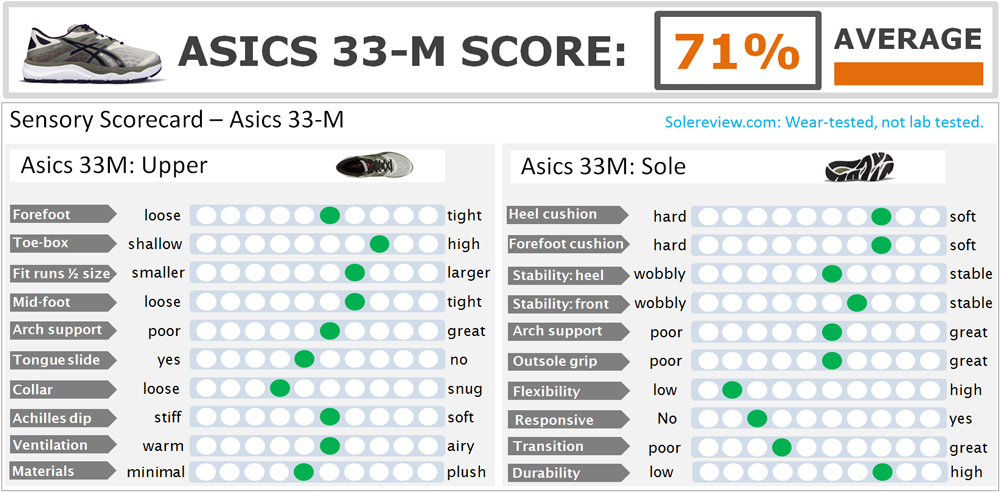
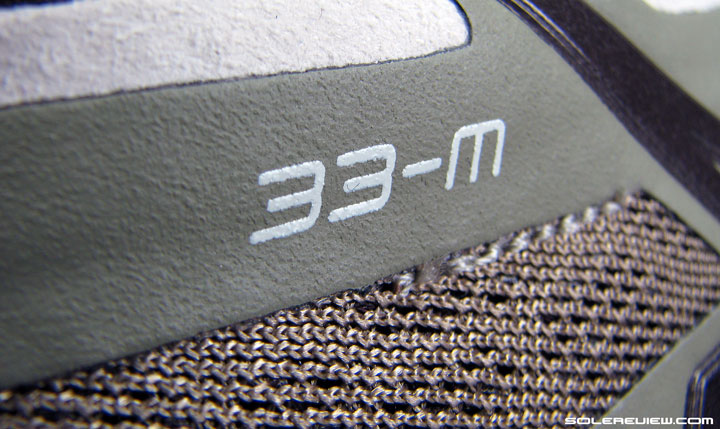
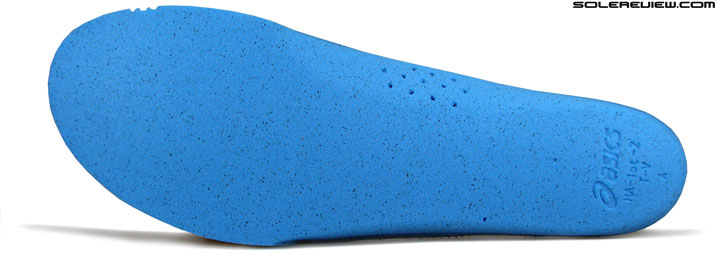
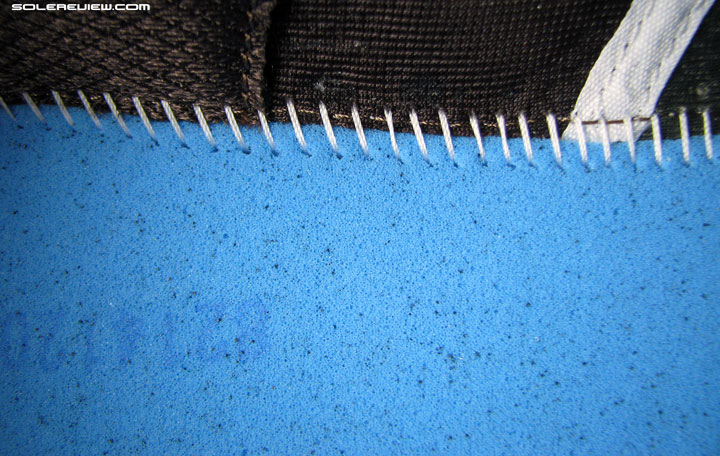
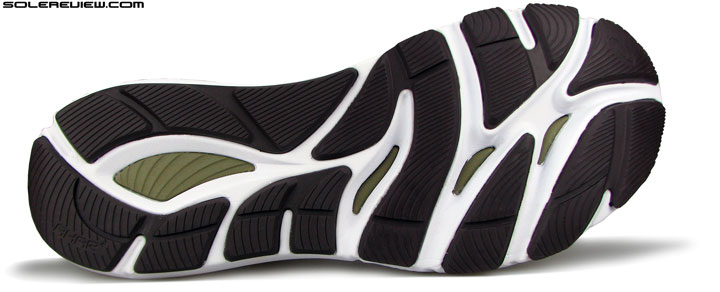
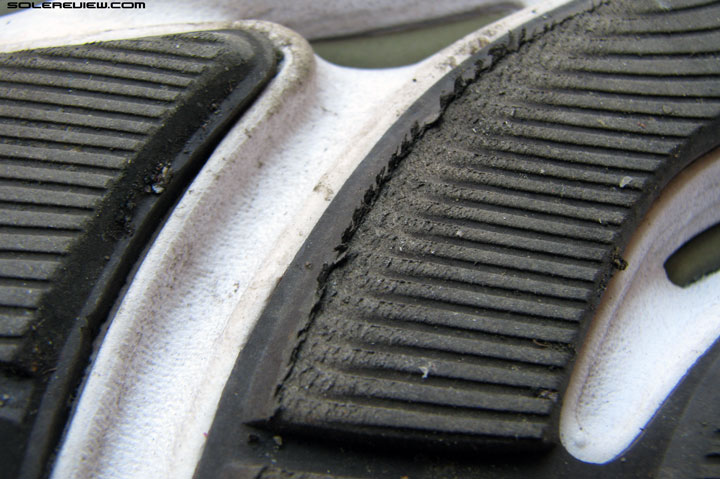
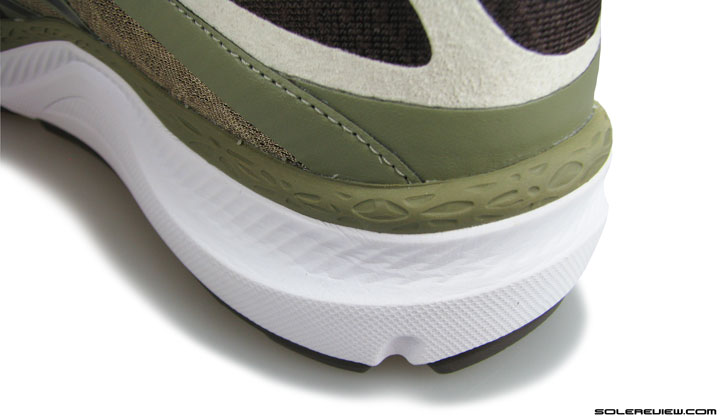
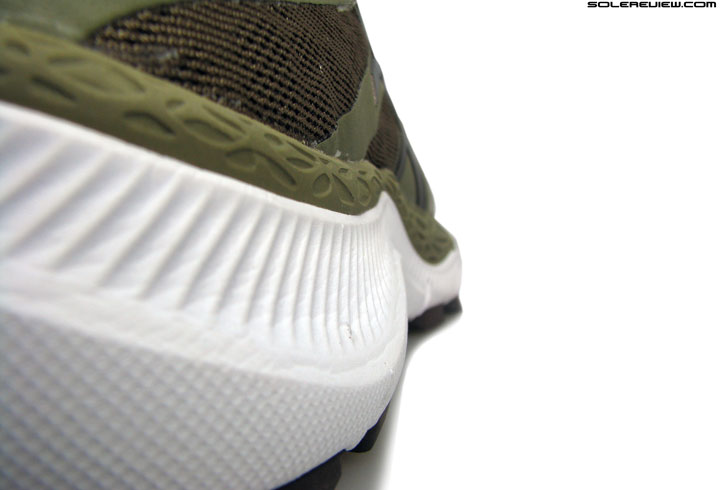
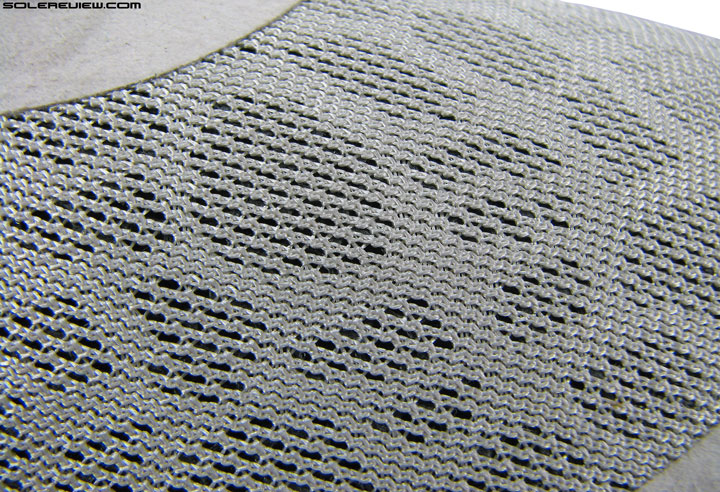
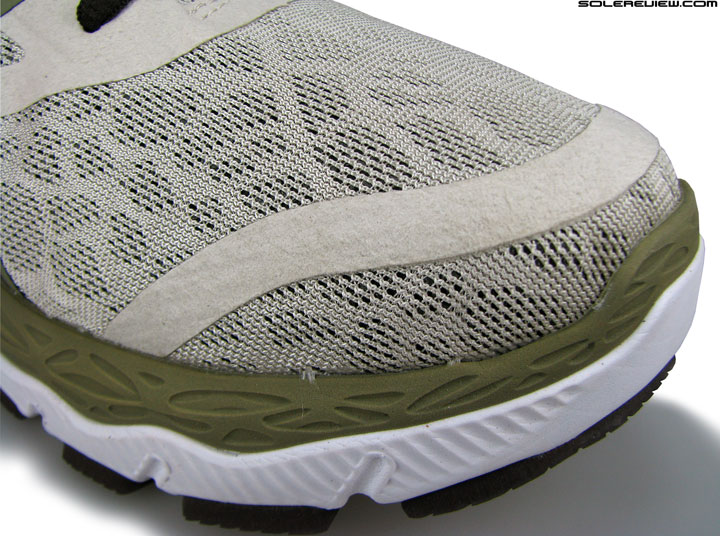
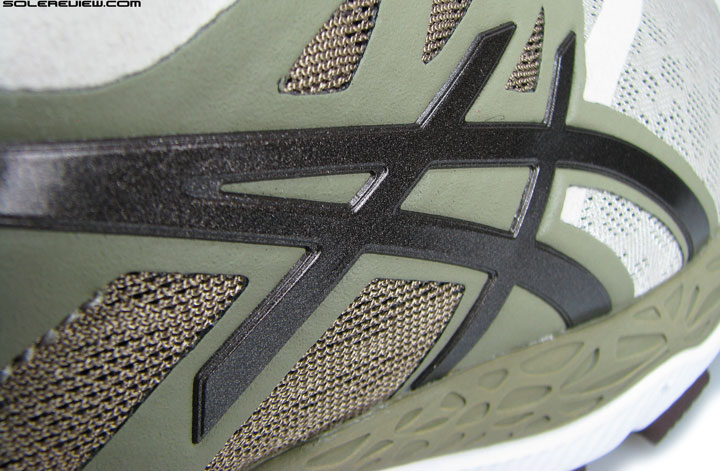
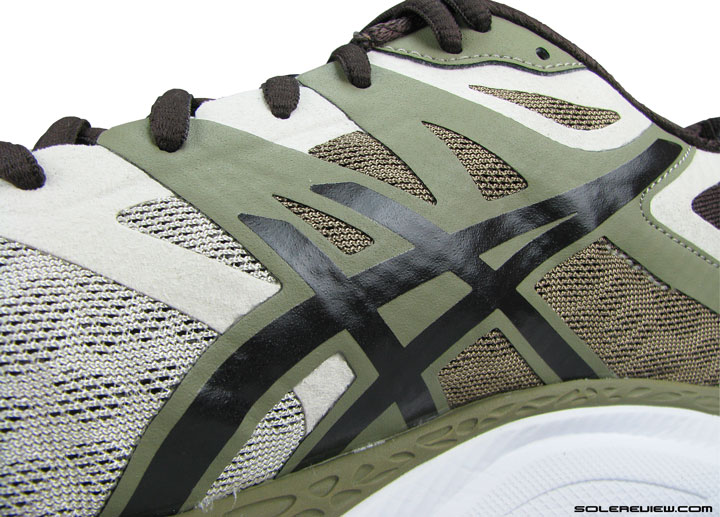
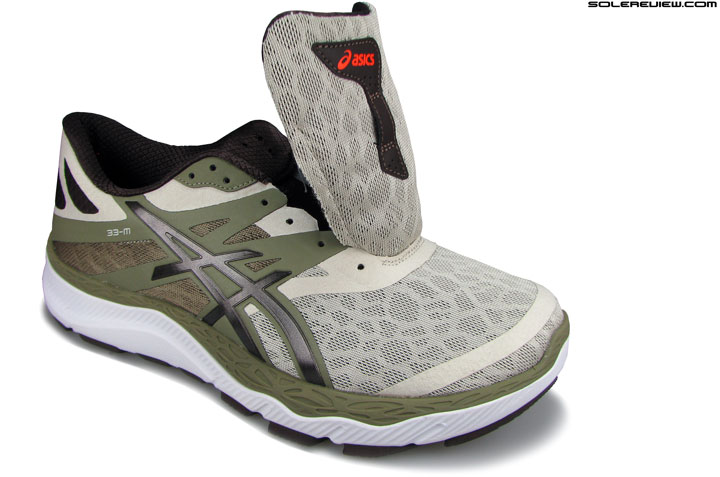
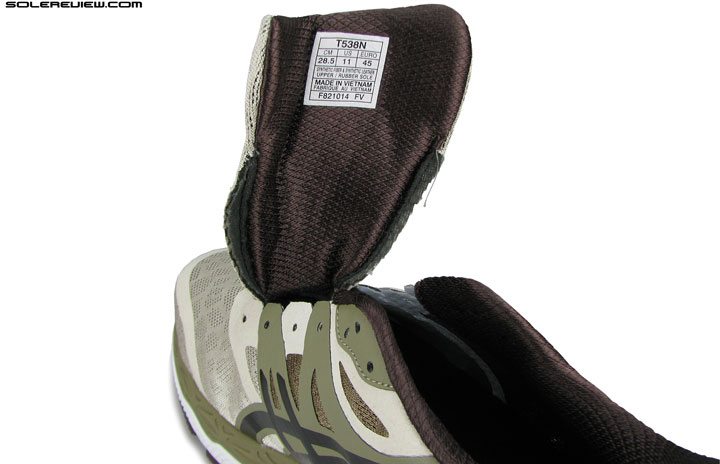
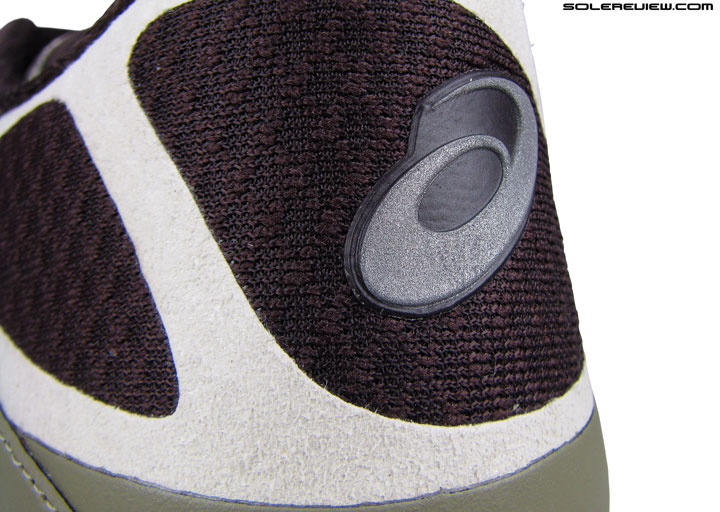
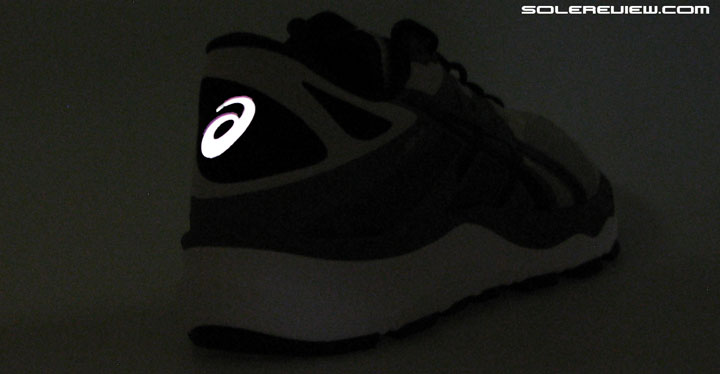
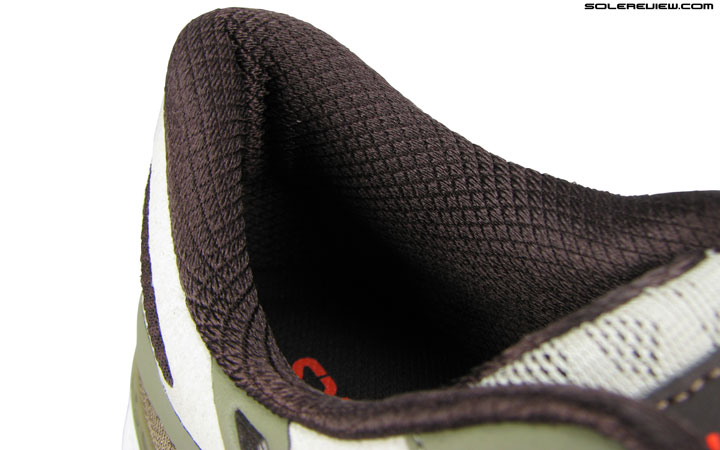
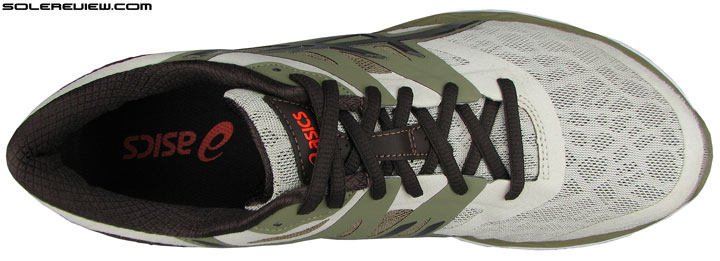
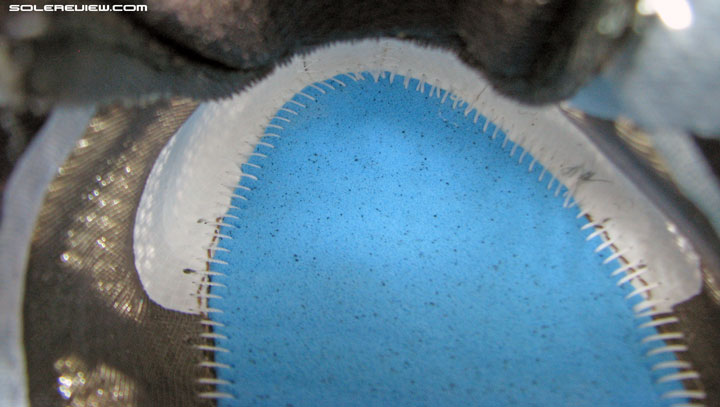
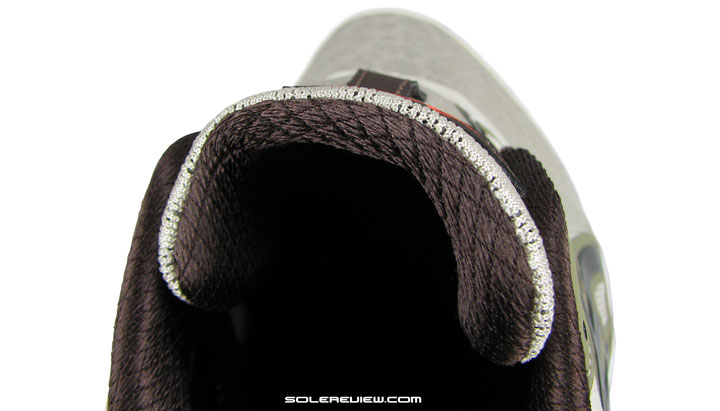
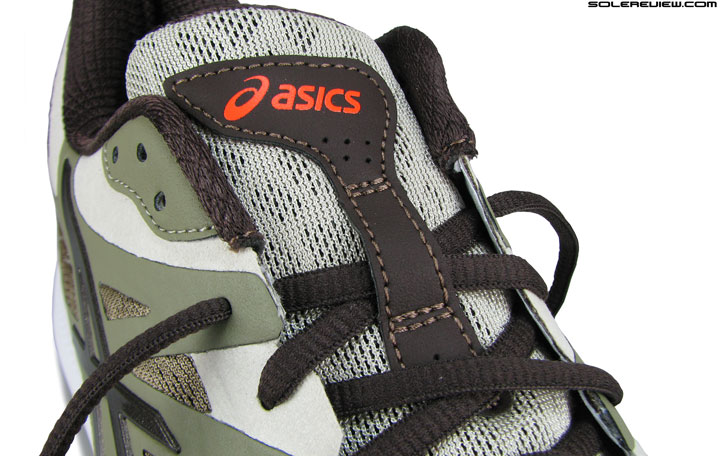
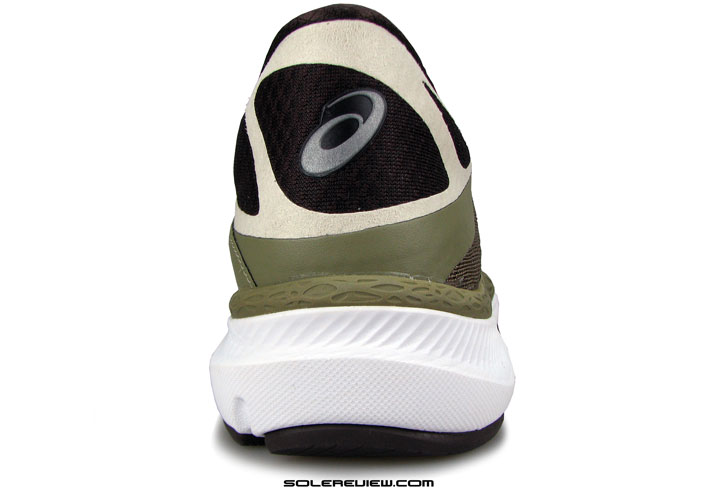
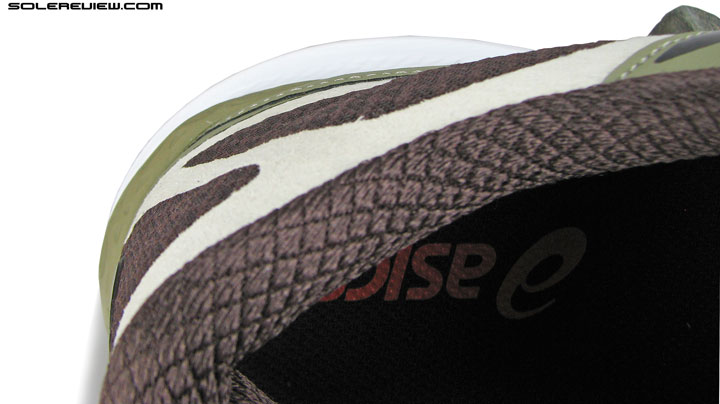
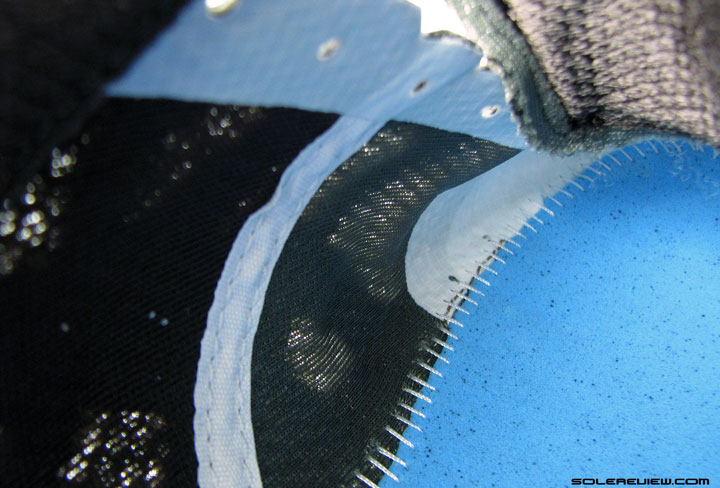
13 comments
It´s a little bit sad that the 33-M sucks. I hoped for Hoka cushioning and ride quality, a wide toebox and great durability. Well, Asics should be going back to the drawing board, indeed. Weight seems unreasonable high too. A low drop shoe with max cushioning should have some kind of rockered (mid-)sole structure to support transition. But it´s interesting how much traditional shoe brands still seem to struggle with “natural” running, be it in it´s maximal or minimal form. Although one could hope that companies like Asics could do much better with all of their resources and know how, these models look like half-baked niche fillers and me-too products.
It will be a rare day when Asics truly delivers an original and innovative product which adds value to this category.
They have been piggybacking on franchise models introduced decades ago, and anything ‘new’ is just a lift from current market trends. Or as you aptly put it, a half-baked niche filler.
Thanks for the reply :) For me it would have been enough if Asics would have improved on some of the flaws of recent maximalistic shoes like the fit and durability, upper etc. Asics doesn´t have to be like the high risk taking innovative smaller companies but they could just release some mature products.
Reading this review I couldn’t help but think that khaki/coffee/orange was the perfect avatar choice for this shoe. So insipid an uninspiring: much like Asics at-large, it could use a jolt of caffeine to the system.
Asics is, on the whole, “uninspiring” only if you insist on change-for-the-sake of change and the constant touting of “new technologies” . . . that will be supplanted next year by even “newer” technologies, ad infinitum. For me anyway, Asics just works–and does so more consistently than any other manufacturer.
What IS sad about the 33-M is that it departs from “Asics at-large” in a misguided attempt to cash in on the Hoka marketing buzz . . . when the Nimbus 17 is already a better high-mileage road shoe than any of Hoka’s clunky and ill-fitting offerings.
Remember the “minimalist” craze, when all the “barefoot” runners trashed “outdated” shoes like the Nimbus and Kayano? Now minimalism is dead, and it’s the self-proclaimed maximalism experts who are trashing the Nimbus and Kayano type of shoe. I’d wager that when the Nibmus 27 and Kayano 31 appear on the market ten years from now, both minimalism and maximalism will be nothing more than footnotes in some shoe marketing textbook. Just sayin . . .
I agree that you have to just go with what works and that’s different for everyone, and Asics has been delivering a consistent product in their core lineup for some time now. I think that’s a good thing, in general–see Nike’s inability to deliver on the Vomero year after year.
But, outside of their core lineup, Asics has been all over the map for awhile with their marketing and positioning within the newer trends. I’ve read plenty of reviews (elsewhere, of course, not here) parroting Asics’ line about sticking to their “science” instead of going onboard with the minimalism fad. Well, then, they started releasing shows, such as the Gel Lyte 33, that looked an awful lot like competitors to the Kinvara and Pure series–drop the stack height, lower the weight, lose the rubber etc. Now they’ve redone the lineup to catch up again (I actually really like the original Gel Lyte 33, except for its midsole/outsole durability.) And this 33-M looks like some kind of heavy clog, which leads me to wonder what kind of science suggests to them that there’s anything “natural” about this shoe, which is ridiculously heavy and brick-like for what it should be.
I think that even granting that minimalism and maximalism are both fads, they’ve led to some interesting questions and innovations: mainly if we really need to be running in platform shoes with heels separated from the rest of the shoe by plastic shanks, (allegedly) fill midsoles with gels and other devices, and build uppers held together by massive amounts of overlays. Everyone’s preferences are different, but I think the answer for many people is that you can do away with much of that stuff and build shoes with simple uppers and light but really responsive foam midsoles.
And I think that’s where Asics has been struggling–figuring out how to make a low/mid-weight shoe that can handle both long distances and tempo runs. Brooks, Nike, Saucony, and now New Balance, among others, all have standout offerings that could be described, to varying degrees, as drawing upon the back-to-basics influence of minimalism while offering midsole bounce derived from recent interest in maximal cushioning.
Jonathan,
I don’t view “change for the sake of change” and “the constant touting of ‘new technologies'” as requisites for being inspiring. A company can also be inspiring when it knows what it wants to be and executes its products well, even if that means mastering a less exciting product year in and year out. Volkswagen’s Golf/GTI is a fine example of that. For decades the GTI has used the same basic design: a two-box design, front-wheel drive compact hatch. There’s nothing terribly sexy about a Golf or GTI, yet Volkswagen has fine-tuned that product over time to such a degree that it’s one of the most complete cars in the world. They don’t have to be Tesla (to take nothing away from Tesla; they’re doing some really exciting things and pushing the envelope into previously unforeseen territory).
I’ve actually run in my fair share of Asics in the past and enjoyed some of them quite a bit. The GT-2000 2 was my favorite everyday trainer last year. But somewhat inconsistent with your view that Asics works more consistently for you than any other manufacturer, the company’s inconsistency has stood out to me recently.
Take my beloved GT-2000. I promptly ordered this year’s version when they released, and lo and behold, they felt very different. The new heel design compromised the rearfoot fit, and underfoot everything became very, very soft. It didn’t feel like a balanced stability/cushion shoe anymore. It just felt mushy and slow. So I returned them and haven’t looked back.
To continue the automotive comparison, Asics to me is looking a lot like BMW lately. As recently as two model generations ago, BMW’s product line was defined by a tightly-focused lineup that simply outclassed the competition when it came to driving dynamics. Their “Ultimate Driving Machine” moniker was well-deserved. But look at the lineup today: in trying to chase sales figures in every market niche, they’ve lost the plot of what made them great. The 3 Series missed a Car and Driver 10 Best nod for the first time in two decades, while the M5, long considered the best executive sports sedan on the planet, has fallen behind Audi, Mercedes, and soon perhaps Cadillac. But at least you can pick between a 3 Series Gran Turismo, 6 Series Gran Coupe, X1 Sport Activity Vehicle, and X6 Sport Activity Coupe (what the hell is a Sports Activity Coupe anyway?).
I feel the same way about Asics. Their core models used to represent the pinnacle of their respective categories. But the one-time king of stability, the Kayano, is now so soft that the line between it and the Nimbus has blurred. The same could be said in some respects for the Cumulus relative to the Nimbus. And that’s to say nothing of models like the 33-M, which, to paraphrase your comment, is a misguided attempt to cash in on marketing buzz.
Asics is still very, very popular, as is BMW. But in each case, I can’t help but suspect that their continued popularity might be influenced at least to some degree by brand familiarity rather than the quality and performance of their current products. I wish Asics would stop trying to chase every market niche and trend by pumping out me-too models in the Natural33 “Collection” and softening its core models beyond recognition. I agree with you that when the Nimbus 27 and Kayano 31 appear on the market ten years from now that both minimalism and maximalism will be nothing more than footnotes in a shoe marketing textbook. I also hope that they’re not simply Asics-branded examples of 2025’s running shoe trends. I, for one, would rather see Asics be Volkswagen than BMW.
I have to defend Asics (not this shoe…not a fan).
I understand that people want shoe companies to constantly be pushing the envelope, but isn’t there something to be said about consistency? I can’t stand that shoe companies have to update annually. In this day and age when you find a shoe that works, there’s a huge chance that the next year’s model will feel completely different. That just sucks.
We can all sit here and dog on Asics for their lack of change, but I see more runners wearing Asics than any other shoe model. The cynical side of me says that said runners don’t know about other shoes, but I have a nagging feeling that the reason that Asics is so popular is that whole consistency year to year thing.
Anyway, just my two cents.
Can’t say we have a ton of experience with Asics running shoes, but based on our reviews of Kayano/Nimbus/GT XX series, we think that Asics has built an illusion of consistency without actually delivering on it.
Let’s look at the Nimbus. The 14 was a bit firm, then the 15 went super soft, the 16 firmed up again and now the 17 takes soft cushioning to the next level, more so than any of the three prior editions.
Same happened for Kayano, which went from poster child for stability/motion control to an unrecognisable mushland in version 21.
Asics keeps changing the formula for their GT series too, seesawing across models over years.
And then there’s their ‘new’ business, which is an attempt to slipstream off existing trends – that is a problem, because this is one area which needs new thinking if the brand wants to differentiate. Other brands (New Balance in particular) seems to have customized that formula well.
Sure, but you can still find the same feel of the shoe you like; the new GT10003 reminds me of the late 2170. Sure, it’s super annoying, but you can, for the most part, still find the ride you’re used to. Except for the Kayano; that shoe has been a mess for years now, as has the new 2000 series.
A GT 1000 feeling like a 2170 isn’t consistency, as they are from two separate price-brands/sub-series.
I understand what you are saying, but I still disagree. Most Asics have a similar feel to them. Expecting them to change the foundation of their shoes is like asking Mizuno to remove their wave tech.
I can understand saying that their lineups year to year are inconsistent. I can get that; I even said that it was super annoying. My issue with people wanting Asics to change how they build their shoes has more to do with people wanting them to cater to minimalism and reduced heel to toe drops. If you look at Saucony, most of their flagship models are down in the 8mm drop range. There are tons of runners who still prefer 12mm drop shoes; they don’t really have that option in Saucony shoes anymore. That sucks!
It’s like stability shoes; even though a lot of internet runners seem to completely dismiss traditional “stability” models, the fact of the matter is that tons of runners still use and prefer them, and now those runners really only have a few options, as shoe companies keep reinventing their own wheels, making stability shoes milder and milder. It seems like that may be shifting a bit (Structure 18, GTS 15, 860v5), but a lot of Stability shoes are borderline neutral these days. I wouldn’t be surprised if shoes like the Brooks Beast and Mizuno Paradox aren’t even around in two years. That sucks for those that want those models; why should they have to stop running in their models because of a bunch of internet forum dwellers pressuring companies to remove motion control elements from shoes?!
Another point, and this is very relevant to your page in particular, as you’ve pointed this out a few times; Brooks and Saucony have completely jumped the shark with their respective midsole compounds. Their newer models all have these weaker compounds that aren’t half as good as they used to be (Glycerin…looking at you), yet they don’t catch half the flack that ASICS does across the web. I just question why. ASICS, for the most part, in their core lineup, uses at least the same 10mm drop and similar lasts year to year.
I don’t know; I just feel as if Asics catches internet wrath because it’s the in-thing to do. I really dig the site, and I hope this comes across as a conversation and not trolling.
Agree with the point that low heel drops and minimalism aren’t necessarily improvements, and Asics should not do it just for the sake of a market trend.
Stability shoes are a different issue altogether – and beyond the scope of this comment box.
Anything and everything can be improved, and Asics seems to lag behind in this department. Their Gel is pretty much a sham – there’s more on the outside windows than inside the midsole, making it functionally useless.
Out of all their shoes we’ve tested, none of the midsoles felt responsive, Their shoes are heavy and their tongue slides. Because they use so much of external overlays, they have to resort inserting a separate piece of fabric inside, eating into space and feeling inconsistent in lateral and medial fit.
The problem with familiarity is that retailers and consumers want to cling on to it, despite its shortcomings. This mindset prevents the brand from becoming truly innovative, and they keep churning out models which visibly and functionally are similar. We haven’t tested all their shoes, but their assortment seems a clutter.
Mizuno on the other, is very focused in its merchandising approach. Less noise, and everyone knows what to expect for many of their models – for the most part.
Here’s a sample list of things which we think Asics can be better at:
1) Revamp their Gel system – move it inside the midsole where it is functionally effective, and not mere showpieces.
2) Work on an improved foam compound which feels more responsive. (and lighter)
3) Take the layering off the upper, making the insides and overall fit smoother – the Nimbus 17 is a good step. The last works just fine, no change there.
4) Redesign outsole to improve transition, grip and overall quality of ride. Their current design (Kayano, GT,Nimbus) feels clunky. This will also help reduce weight.
5) Trim down the assortment to weed out un-necessary models. Stop trying to be something for everyone – keep it focused.
Comments are closed.